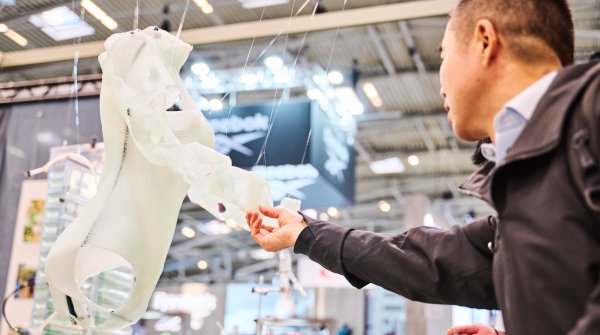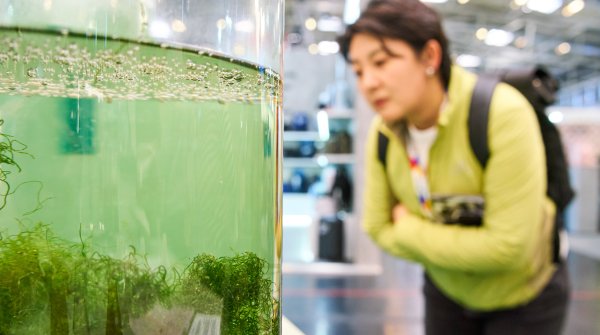
What do the such different brands Arc’Teryx, Canada Goose, Löffler, Maloja and Vaude have in common? They produce a significant part of their collections in their own factories, and in some cases right on their front doorstep. That is noteworthy when you consider the globalized supply chain in the clothing industry.
For a long time there was nothing more antiquated than to employ your own tailors. The result of this was that companies in the sports industry could no longer manufacture technically demanding products in their own countries. There are no more businesses with the necessary expertise to keep up with the Far East.
All the immense advancements in the manufacturing of sports products – you can’t help but to think of the many bonding techniques – were mostly developed and brought to the market in China in recent years. This loss of expertise is unsettling many companies.
More protection of intellectual property
Arc’Teryx, for example. The Canadian outdoor brand is one of the leaders of innovation in the sector. Numerous ground-breaking innovations in the processing of functional jackets, climbing harnesses and backpacks were developed by the Canadians.
For a long time, people boasted about their “Made in Canada” goods, but after the brand was passed between a number of owners, the proportion of foreign-manufactured products rose consistently. Many customers didn’t like this.
The construction of a new highly modern production hall near Vancouver, the head office of Arc’Teryx, marked a turning point in 2016. While just 350 workers could be employed in Canada before, the new production facility offered space for almost double.
Today the high-end fashion line Arc’Teryx Veilance, all climbing harnesses, the avalanche airbag Voltair and the most costly Gore-Tex jackets are developed there from the first cut to the final inspection. Arc’Teryx is also involved in the development of the machines. Jon Hoerauf, Arc’Teryx General Manager: “In this way we are protecting our intellectual property.”

It is the same situation for the brand Maloja, which bought its own production facility in Bulgaria a few years ago. “Having your own production facility has a certain charm when you produce all the technical parts on your own”, explains Klaus Haas, Maloja CEO. “We can now buy the machines we need ourselves and can of course develop them. We have gained in knowledge through this and that helps us to better understand other producers. And we have become more efficient.”
Arc’Teryx also needed to become more efficient in its new factory. A sophisticated lean manufacturing system makes sure the facility is financially worthwhile.
In the know in the sports business: Subscribe to the newsletter for free >>>
Highly efficient production
Canada Goose is also working towards more efficiency. In recent years, the Canadian down specialist has bought up many production facilities in Canada and equipped them to high-quality standards.
The main concern of the founder’s grandson and CEO Dani Reiss is ensuring the company’s own production on site. Considering the three to four digit growth rates and globally-oriented sales, the tradition of “Made in China” ran into serious danger.
The fundamental decision to produce in Canada was finally made when the brand only sold 15,000 in a year. Today they sell almost a million. In 2014, Canada Goose accounted for six percent of all Canadian production jobs in the clothing industry. With the additional factory purchases in recent years, the proportion may have increased further.
“I am proud of our leading role in the rebuilding of the clothing industry and production infrastructure in Canada”, says Dani Reiss. “You can’t make a Swiss watch in Japan, and neither can you make a Canada Goose jacket in China.”
Production also moved in central Europe
Brands in central Europe, whose origin is not so prominent in the name like Canada Goose, are also focusing on their own production – for example the Austrian company Löffler.
At Löffler 99 percent of production is done in Europe while 80 percent of the value creation takes place in Austria and 70 percent of materials come from their own knitting factories.

All production steps, which are distributed across the globe in other companies, are bundled together on site, from the development to the production of materials to manufacturing. Around 200 people are employed by the company, including many apprentices who receive the specialist knowledge – a tradition many years old.
For a long time that didn’t make much progressive sense, but sticking to the Austrian site has a clear advantage today. Otto Leodolter, Managing Director of Löffler: “Of course there was and is often need for explanation regarding the price difference, which comes about logically as a result of the highly different labor costs. Nevertheless the advantages have always outweighed the disadvantages.”
The home-owned knitting factory forms the basis for important products at Löffler and continually makes new innovations. “The other advantages always included the fast reaction to the market, the NOS service and less stock”, according to Leodolter.
Adidas also wants to make on-site production possible with their planned Speedfactories and thereby benefit from the time savings and greater proximity to the market.
On-site production means more sustainability
Production in Austria presupposes working standards that are far from usual in the Far East. Otto Leodolter: “We are convinced that sustainable thinking is pushing through more and more in the clothing industry. In the food industry, origin and production have been an important topic for years.”
You can see exactly the same thing at Vaude. CEO Antje von Dewitz has just put a new highly modern production facility in operation at the company’s site in Tettnang where backpacks and bags are finalized.
The facility replaces a former factory which was destroyed in 2015 by a major fire. “We have made the conscious decision to strengthen our production at the company site and invest in the new factory”, says von Dewitz.
Vaude currently manufactures around five percent of its products fully in Germany. Von Dewitz knowingly accepts the lower margins: “The factory is good for our own identity, for innovation and most importantly for the site and our employees.”
The new interest in domestic production is also important for them. The ‘Made in Germany’ production which grows each year by around 20 percent should be further expanded in future.
VIDEO: Sustainability at ISPO MUNICH 2017
- ISPO awards
- Mountain sports
- Bike
- Design
- Retail
- Fitness
- Health
- ISPO Job Market
- ISPO Munich
- ISPO Shanghai
- Running
- Brands
- Sustainability
- Olympia
- OutDoor
- Promotion
- Sports Business
- ISPO Textrends
- Triathlon
- Water sports
- Winter sports
- eSports
- SportsTech
- OutDoor by ISPO
- Heroes
- Transformation
- Sport Fashion
- Urban Culture
- Challenges of a CEO
- Trade fairs
- Sports
- Find the Balance
- Product reviews
- Newsletter Exclusive Area
- Magazine






